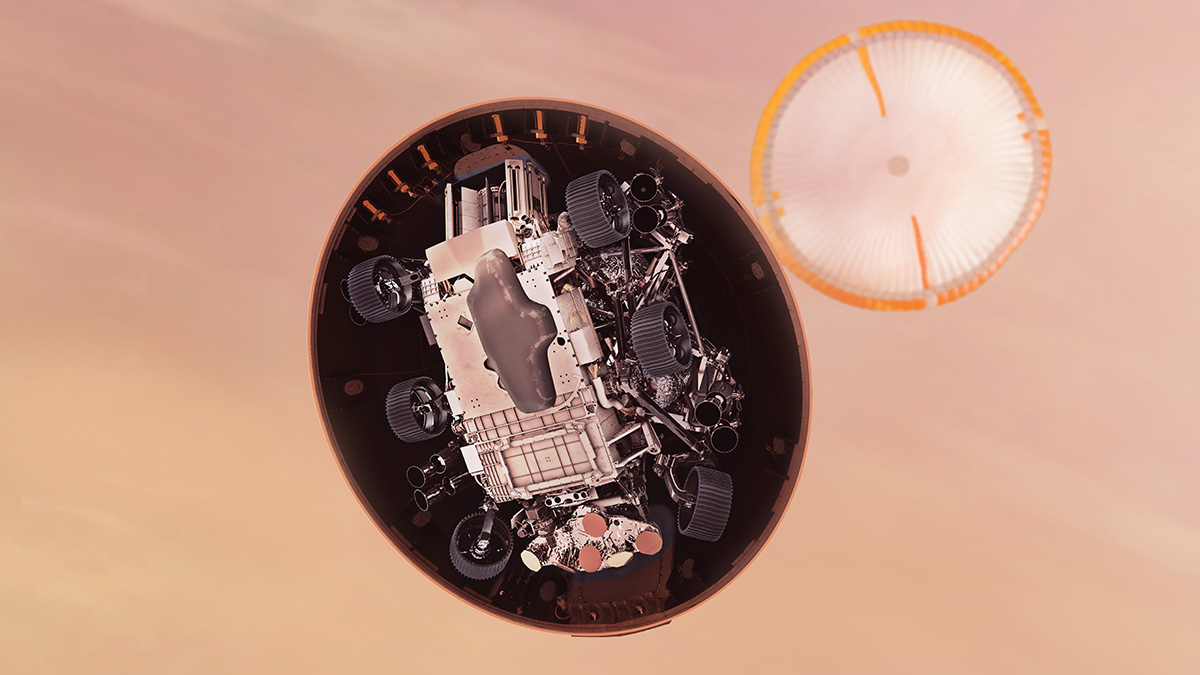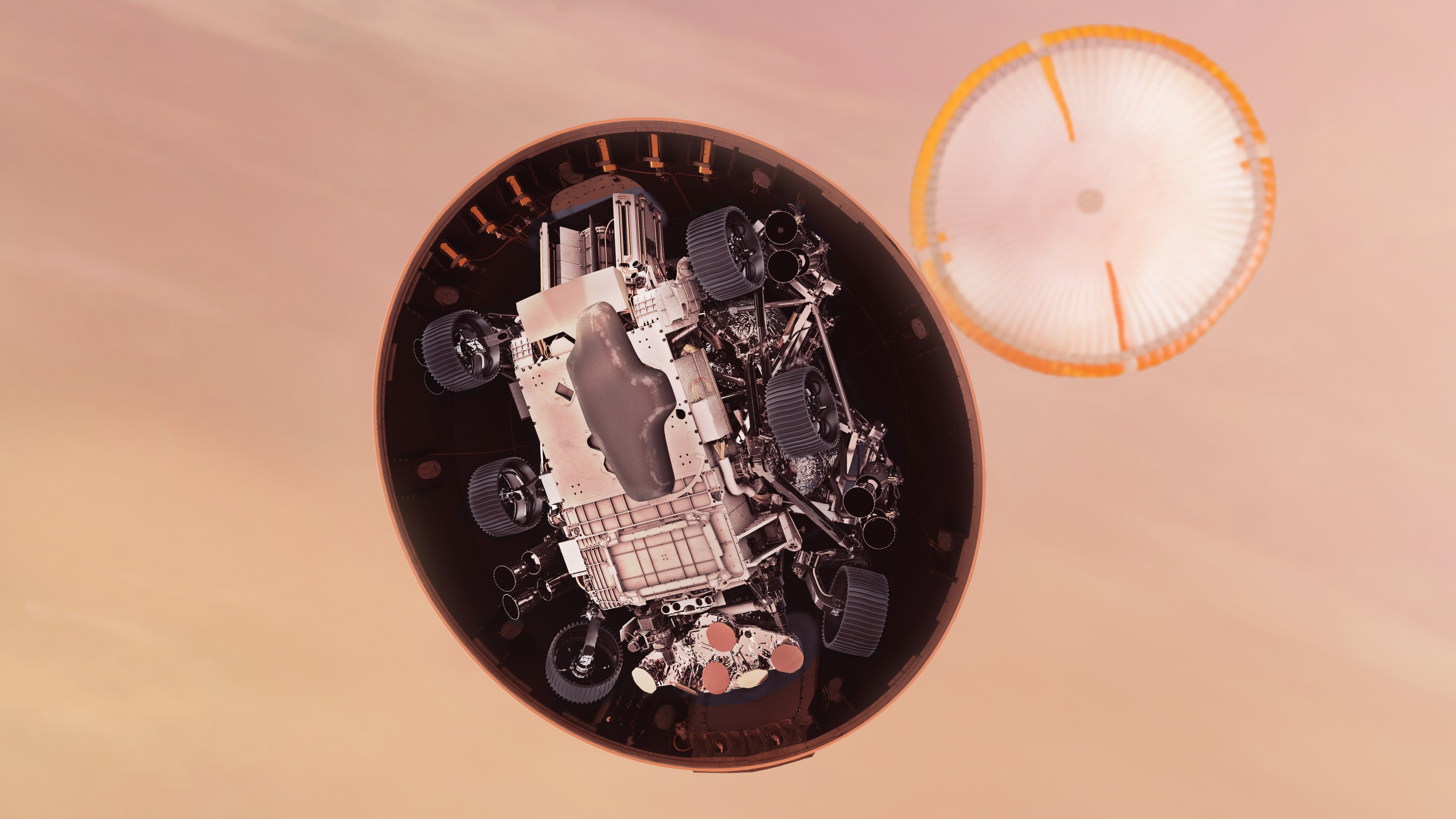Perseverance Heat Shield Separation (Illustration)

| Credit | NASA/JPL-Caltech |
|---|---|
| Language |
|
In this illustration, NASA’s Perseverance rover gets its first look at the Martian surface below, after dropping its heat shield just under six minutes after entry into the Mars atmosphere. Hundreds of critical events must execute perfectly and exactly on time for the rover to land safely on Feb. 18, 2021.
Entry, Descent, and Landing, or "EDL,” begins when the spacecraft reaches the top of the Martian atmosphere, travelling nearly 12,500 mph (20,000 kph). EDL ends about seven minutes after atmospheric entry, with Perseverance stationary on the Martian surface.
The parachute, 70.5 feet (21.5 meters) in diameter, deploys about 240 seconds after entry, at an altitude of about 7 miles (11 kilometers) and a velocity of about 940 mph (1,512 kph). The heat shield separates about 20 seconds, and the rover is exposed to the atmosphere of Mars for the first time. With a clear view of the ground, the landing radar and Terrain Relative Navigation system can begin determining the vehicle’s precise altitude, position, and velocity in preparation for touchdown.
NASA's Jet Propulsion Laboratory in Southern California built and will manage operations of the Mars 2020 Perseverance rover for NASA.
For more information about the mission, go to: https://mars.nasa.gov/mars2020.


